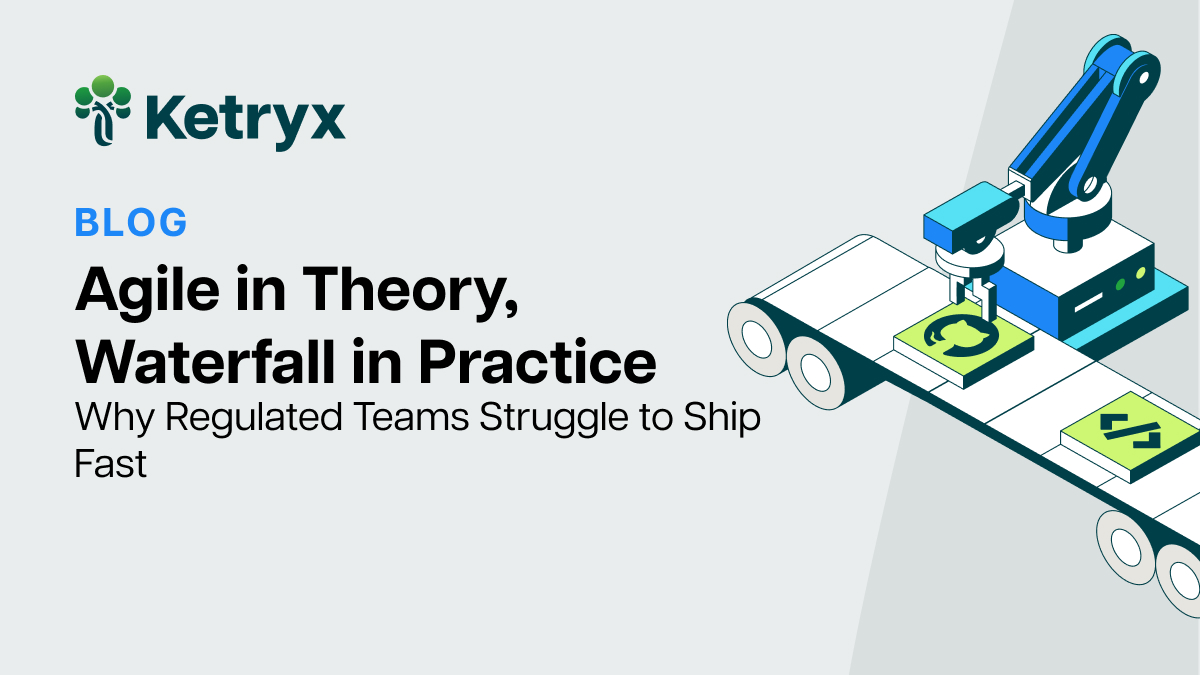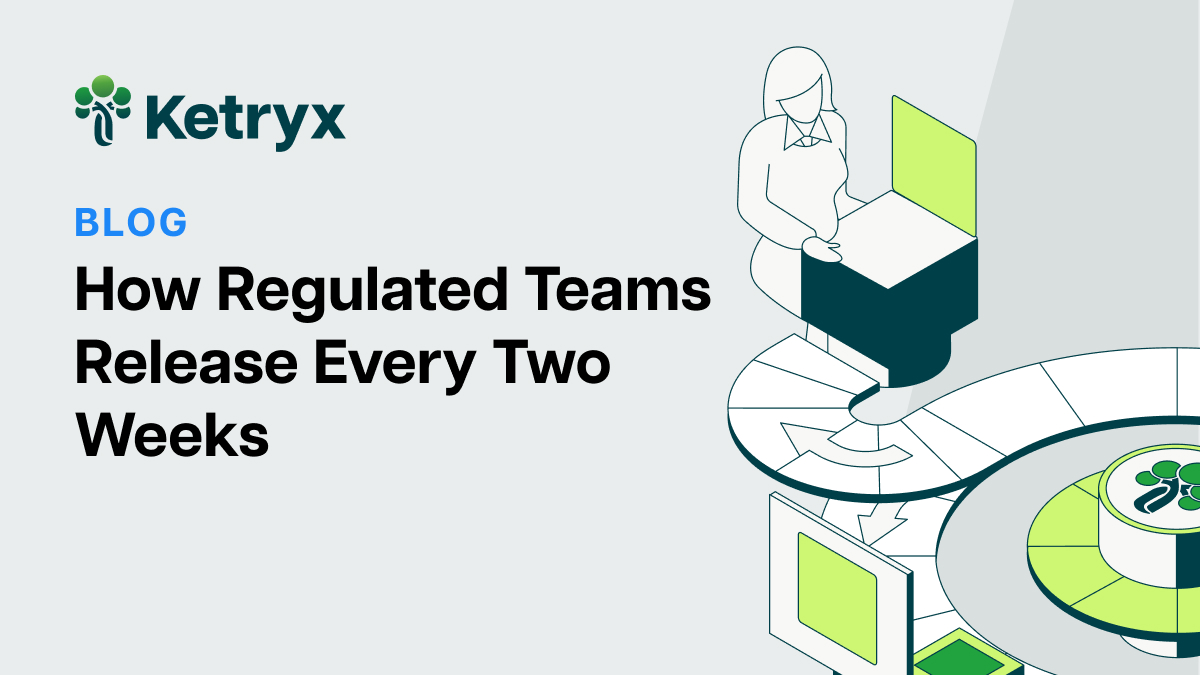
Can MedTech Use Validated DevOps to Move as Fast as Netflix?
Table of Contents
Software development is moving faster than ever due to the widespread adoption of agile, iterative methods. This allows unregulated businesses to ship software at unprecedented speed, helping them innovate faster and release more frequently. Companies like Netflix release software thousands of times per day.
MedTech companies building regulated software, on the other hand, are being left behind because they continue to rely on tools and practices meant for building hardware and embedded software — products with a slower-moving lifecycle. Most MedTech companies release software every 12 to 24 months. In fact, many existing MedTech tools — such as product lifecycle management (PLM), requirements management, testing, and project management solutions — were never designed for software solutions but rather built to design and develop hardware systems at a time when products were significantly less complex.
As a result, regulated software developers are forced to adhere to outdated development processes, which negatively impact efficiency and time to market. Fortunately, there is a solution that can help MedTech companies catch up with the pace of modern software development: Validated DevOps.
What is Validated DevOps?
Validated DevOps is a methodology combining the principles of DevOps with the quality and compliance standards required in regulated industries such as MedTech. It lets organizations adopt modern, agile development practices while ensuring that their software meets the strict regulatory requirements set by governing bodies like the FDA.
A Validated DevOps approach lets teams use their preferred DevOps tools, CI/CD pipelines, and agile practices by automating the processes, documentation, and testing required to maintain a validated state. Automating the interaction between development and documentation allows software development teams to move more quickly while still ensuring regulatory compliance.
Challenges slowing MedTech development
Software development is evolving faster than ever before. Modern development tools and new methodologies, like agile project management and DevOps practices, have enabled companies to build and ship software with previously unmatched speed and efficiency. However, the medical technology industry is lagging behind.
A key factor holding MedTech software development back is the difficulty of meeting strict regulatory compliance requirements using traditional tools and manual practices. These outdated methods often require duplicating work, manually creating documentation, and frequently switching between tools during the development process, making it difficult for MedTech companies to ship software quickly.

Many MedTech companies still use slow, manual processes designed for the pace of hardware, not software. These linear processes and compliance checks are incompatible with the flexible, fast-paced approaches typical of the modern tech industry, especially when it comes to iterative development methods and automation. The resistance to change and the "status quo" mentality in MedTech compliance — coupled with the fear of relying on software to manage patient welfare — further complicate the issue.
How DevOps has revolutionized non-regulated software development
DevOps has transformed the way modern companies create and deliver software by encouraging innovation through collaboration, task automation, and continuous feedback.
What is DevOps?
Development and operations teams work closely together throughout the entire software development lifecycle, from planning and development to testing, deployment, and maintenance. This collaboration helps to ensure that everyone is working towards the same goals.
DevOps also automates tasks such as building, testing, and deploying software, enabling teams to reduce the risk of human error, increase consistency, and accelerate the delivery process. Automation frees up developers and operators to focus on more strategic, value-adding activities. By gathering feedback from users and stakeholders and monitoring systems continuously, teams can quickly identify and address issues, iterate on their software, and ensure that they're delivering a product that fits customers' needs. This feedback loop helps organizations maintain a strong, customer-centric product.

What is CI/CD?
Continuous Integration and Continuous Deployment (CI/CD), a core practice of DevOps, takes the efficiency of DevOps a step further by automating processes and ensuring that errors are caught early so that software is always in a releasable state. CI/CD automates the process of building, testing, and deploying software changes by codifying each of these steps and inserting them into automated workflows.
This significantly reduces manual effort and the risk of human error. When developers commit code changes, the CI/CD system automatically picks them up and integrates them into the software build process. By removing manual gatekeeping and building an automated workflow for delivering improvements, organizations can achieve shorter development cycles and improve the pace of their software development. Frequent releases mean smaller, more incremental changes per release, reducing risk and making issues easier to diagnose and roll back if needed.
How CI/CD can support AI/ML-powered software in MedTech
CI/CD is especially important for medical device manufacturers that develop AI/ML-powered Software as Medical Devices (SaMD). Using a CI/CD approach enables MedTech companies to rapidly iterate, validate, and deploy AI/ML models while adhering to the FDA's rigorous regulatory standards. As new data becomes available, CI/CD enables frequent retraining and redeployment of AI/ML models, helping to continuously improve model performance and maintain safety and efficacy.
Automated pipelines allow model updates to be rapidly validated and quickly pushed to production. CI/CD can also efficiently validate AI/ML models by automatically checking performance metrics, accuracy, and behavior under different scenarios. This comprehensive validation for each change is vital for patient safety. Additionally, CI/CD pipelines with integrated monitoring provide real-time feedback on deployed AI/ML model performance, enabling software developers to quickly identify and resolve any deviations in performance that might impact patient care.
Benefits of Validated DevOps for MedTech
MedTech companies must adopt DevOps and CI/CD practices if they want to drive innovation and remain competitive. By automating repetitive tasks, fostering collaboration between teams, and continuously gathering feedback, MedTech organizations can experience the following benefits:
- Faster time-to-market. The streamlined processes and automation provided by DevOps and CI/CD enable MedTech companies to develop, test, and deploy software more rapidly. Validated DevOps lets teams release changes more often: they can launch small iterations quickly, and use feedback to make improvements on those small iterations. This enables dozens of small releases per year, rather than one major release requiring long periods of development. These rapid deployment cycles reduce the time it takes to bring new innovations to patients.
- Improved software quality and reliability. CI/CD pipelines enhance software quality and reliability by automating testing and deployment, enabling early bug detection through frequent integration, and facilitating rapid feedback and iteration, ultimately leading to more stable releases and increased confidence in software changes. These enhancements also support a shift left culture by moving quality and testing work processes earlier into the development lifecycle.
- Reduced development cost. DevOps and CI/CD can help MedTech companies reduce development costs and optimize resource utilization. Automation reduces the need for manual intervention, allowing teams to focus on higher-value tasks. The increased productivity and shorter development cycles also mean that resources are used more efficiently, leading to cost savings.
- Frequent updates. MedTech companies can leverage DevOps and CI/CD to validate AI/ML models and make frequent product updates. The automated pipelines and continuous feedback loops allow teams to rapidly iterate on software and AI/ML models, ensuring that they remain up-to-date and compliant with regulatory standards.
- Complete validation through automated testing. The use of CI/CD pipelines enables automated testing and deployment. This not only accelerates the delivery process but also ensures that software is thoroughly validated before it reaches patients. The automated nature of these pipelines reduces the risk of human error and ensures consistency across deployments. By incorporating validation into the DevOps workflow, MedTech companies can accelerate their development cycles.

MedTech can deploy faster with Validated DevOps
MedTech companies must modernize their development practices to drive innovation and remain competitive. By automating repetitive tasks, fostering collaboration between teams, and continuously gathering feedback, MedTech organizations can bring new products and features to market faster, improve software quality and reliability, reduce development costs, optimize resource utilization, make frequent updates, validate AI/ML models, and use CI/CD pipelines to enable automated testing and deployment.
Validated DevOps allows MedTech companies to reap significant benefits for themselves and the patients they serve. With the right strategies and partners, the path to validated DevOps is achievable. As the adoption of validated DevOps grows, it's not impossible to imagine a future where MedTech companies can iterate and deliver new releases as quickly as tech giants like Netflix, creating a new age of innovation in regulated software development.

Erez is passionate about improving patient care and health outcomes with software solutions. Over the last decade, Erez worked in industries including computational mathematics, biotech, and energy, helping build monitoring systems for pharmaceutical equipment and AI for medication management. Before Ketryx, Erez worked with Amgen, the world’s largest biotechnology company, as the head of AI/ML for their medical device division and with Wolfram Research, the builders of Mathematica and Wolfram|Alpha. Erez holds a Master of Science in Electrical Engineering and Computer Science and a Master of Business Administration from the Massachusetts Institute of Technology.




